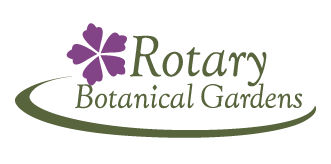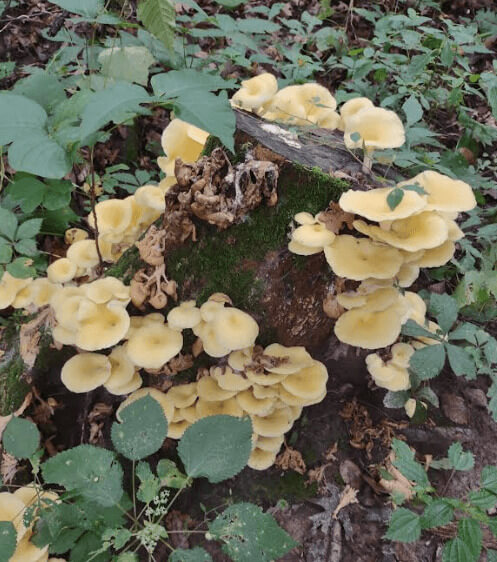
There are more than plants in the Gardens
Mushrooms and fungi play important roles in the ecosystem
This post was written by Emma Wallace, RBG Horticultural Intern

I think most of us grow up thinking of mushrooms as this unknown, scary, forbidden entity that should not be touched or they will harm you in some way. However, this could not be farther from the truth.
Mushrooms and fungi actually are responsible for keeping our ecosystem running; they decompose waste, create symbiotic relationships that create nutrient pathways for trees, provide food for many creatures, and are all around fascinating creatures. They seem to run in the background, performing tasks we don’t even realize that hold up our planet.
Today I am going to attempt to scratch the surface of this world, starting with some friends you probably have growing in your yard. Some of them are great for soil, some are edible, and some are the ones your mom warned you about.
Please do not eat them, including the edible ones, unless you are experienced! This is merely just to introduce you to a world you may not know much about. All of these have been found at the gardens, so they can be a new thing to look for on your next visit!
Lets dive in!
Wood mushroom (Agaricus silvaticus)
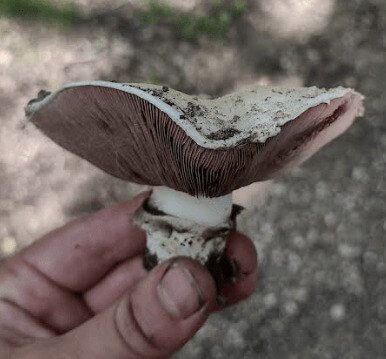
I have found tons of these cute white mushrooms around the gardens in the mulch and around trees. It is fairly easy to identify: it has brown gills with brown spores, a white cap and stem, and typically has a ring from the membrane from which it emerges.
It is not edible in most field guides, but does make sweet fairy rings. This is such a lovely mushroom, and it always makes my day to find it because of how cute it is.
Oyster mushroom (Pleurotus ostreatus)

These are the classic edible mushroom, and they have even made their way into nearly every grocery store. They are extremely delicious and taste kind of like fish. They are also super easy to identify!
They have decurrent gills that tunnel all the way down the stem. They are also typically yellow, but also can be white or brown. They are found on dead or dying hardwood trees.
Pheasant backs (Polyporus squamosus)
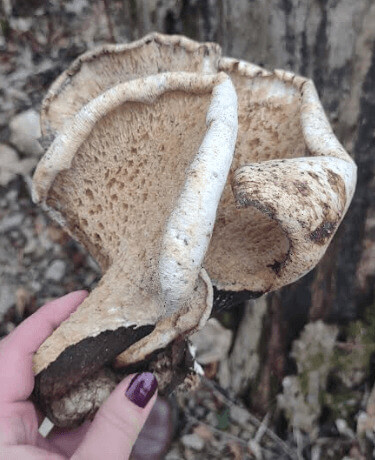
Another edible friend! Pheasant back mushrooms are also saprotrophic like oyster, meaning they grow on dying trees. These fellas smell like watermelon and have a pheasant back pattern on their caps, hence the name.
They have black stems, and very large pores. Only the small ones are edible, as the big ones get very woody.
Turkey tails (Trametes versicolor)
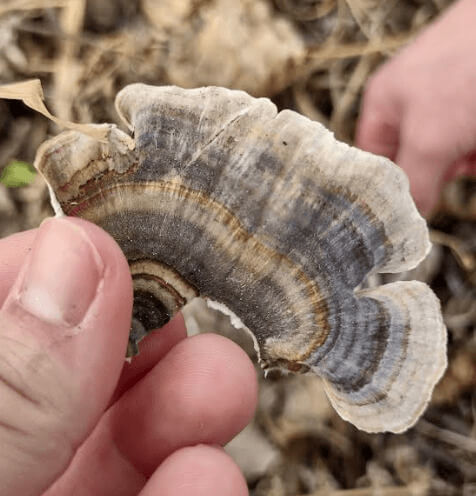
A mushroom that prevents cancer? Turkey tails are currently being studied for their crazy medicinal properties.
This mushroom also grows on dying trees. Here’s some identification features: rings of multiple, contrasting colors of grey and brown, fuzzy grey hairs, tiny white pores, and extreme flexibility. There are many look-alikes, but none of them are poisonous.
I have seen them completely cover logs, which makes for a beautiful sight.
Puff balls (Lycoperdon perlatum)
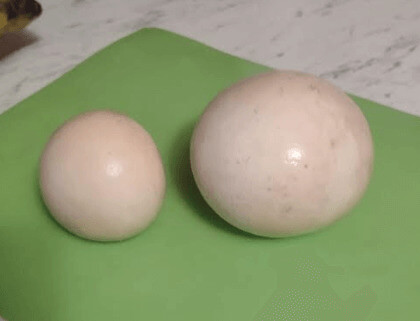
You’ve probably played with puffball mushrooms as a kid, likely kicking them and watching them explode. They are the easiest edible mushroom to identify because of their very large, white, spherical shape. The edible ones are solid white throughout the mushroom, not black or yellow like the non-edible ones.
They are fantastic in soups or as a keto pizza crust! When dried, they earn their namesake, as if you touch them, a spray of spores will fill the air like a dust. These are very entertaining, especially to kick and explode.
This is only the tip of the iceberg
Like I said, this is merely an introduction to mushrooms so that you may begin to enjoy them in addition to the plants at the gardens. If you are interested in learning more, I highly recommend picking up a field guide, as they are extensive and very interesting.
If you have any questions, feel free to email me at [email protected]! I would love to chat with you, as this is one of my passions.
